Best budget cycling shoes 2025 rated and reviewed
Whether you are riding road pedals or off-road pedals, good shoes will improve your comfort and efficiency, and needn't break the bank

As one of your contact points, cycling shoes are an integral part of finding comfort on the bike as well as aiding an efficient pedaling stroke.
At the premium end of affairs the best cycling shoes are focused on performance, with stiff carbon soles used to deliver plenty of power transfer as well as keep the weight down. Typically no expense is spared when it comes to materials. But owning the same shoes as your favourite pro will put a serious dent in your wallet.
Fortunately there is a degree of ‘trickle down technology’ from the flagship models to those more affordable options. And while you won’t benefit from the same materials you can find a shoe that looks the part as well as offering a few performance-driven features. In fact, for many cyclists the best budget shoes might prove a better fit, with soles that are a little more forgiving.
We’ve tested plenty of affordable shoes and have selected some of our favourites here. We’ve divided them into road shoes that use a 3-bolt cleat system for an effective power transfer and SPD designs, which have a 2-bolt design. Like the best gravel shoes these are also a good fit for commuters and touring cyclists too, who like off-road cyclists need a shoe that’s comfortable and safe to walk in.
All of the shoes we’ve reviewed here are designed to work with clipless pedals (the type of pedals that you clip into, rather confusingly, but all is explained in our how to cycle with 'clipless' pedals guide).
The quick list
Road shoes
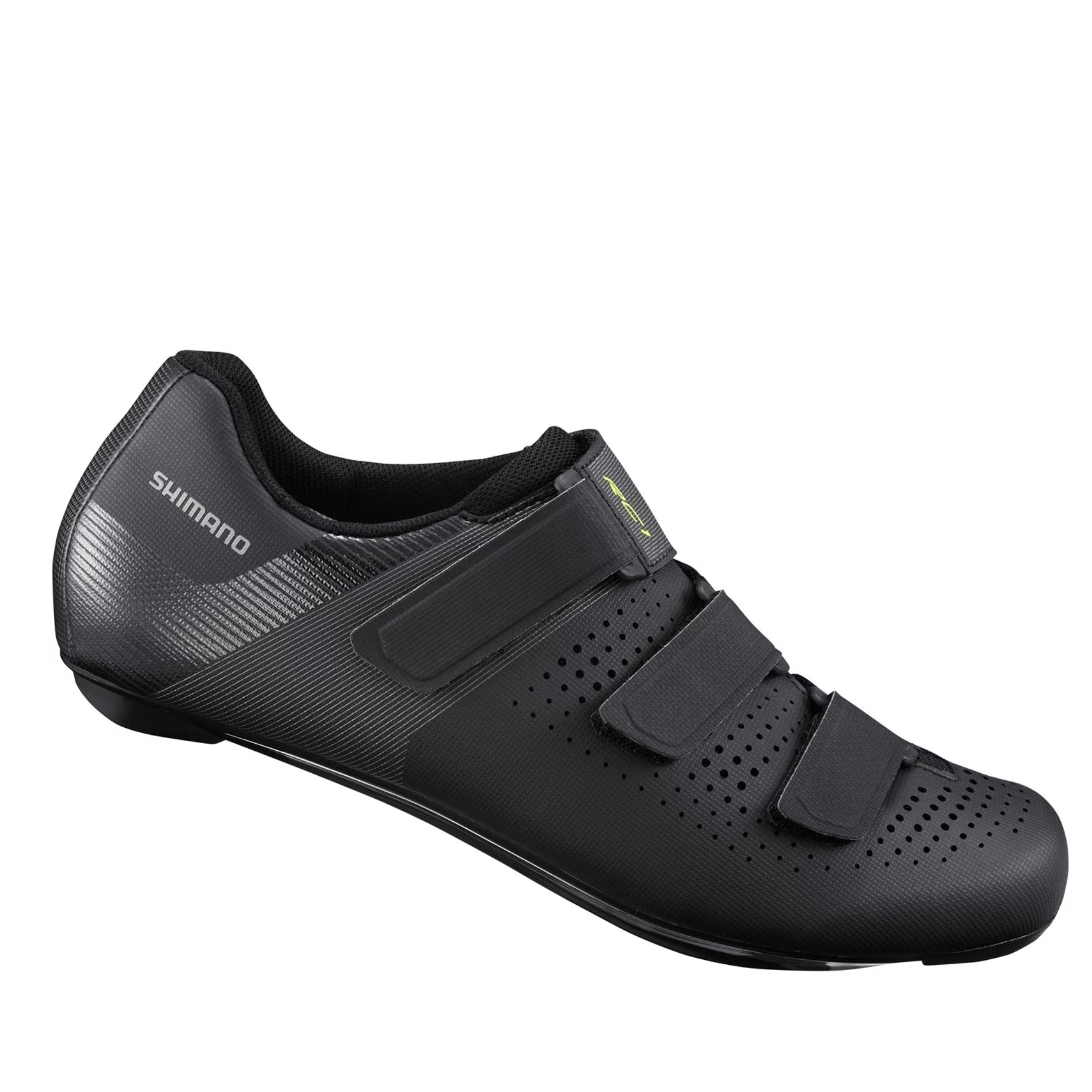
A snug heal and roomy toe box combine with a reasonably stiff sole that blends pedaling efficiency with comfort.
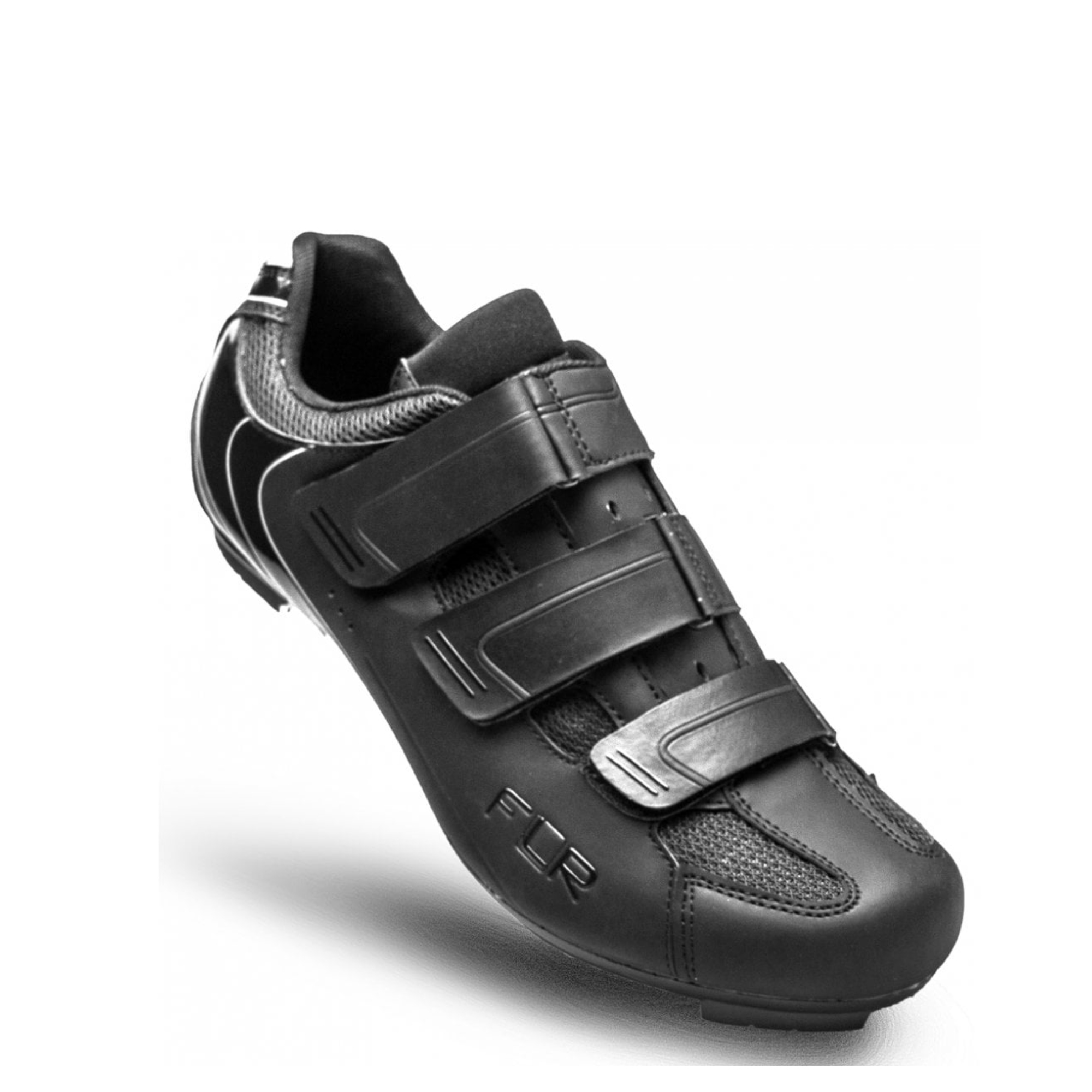
Comfort, fit and performance belie the price tag. The reflective heel patch is a nice touch too.
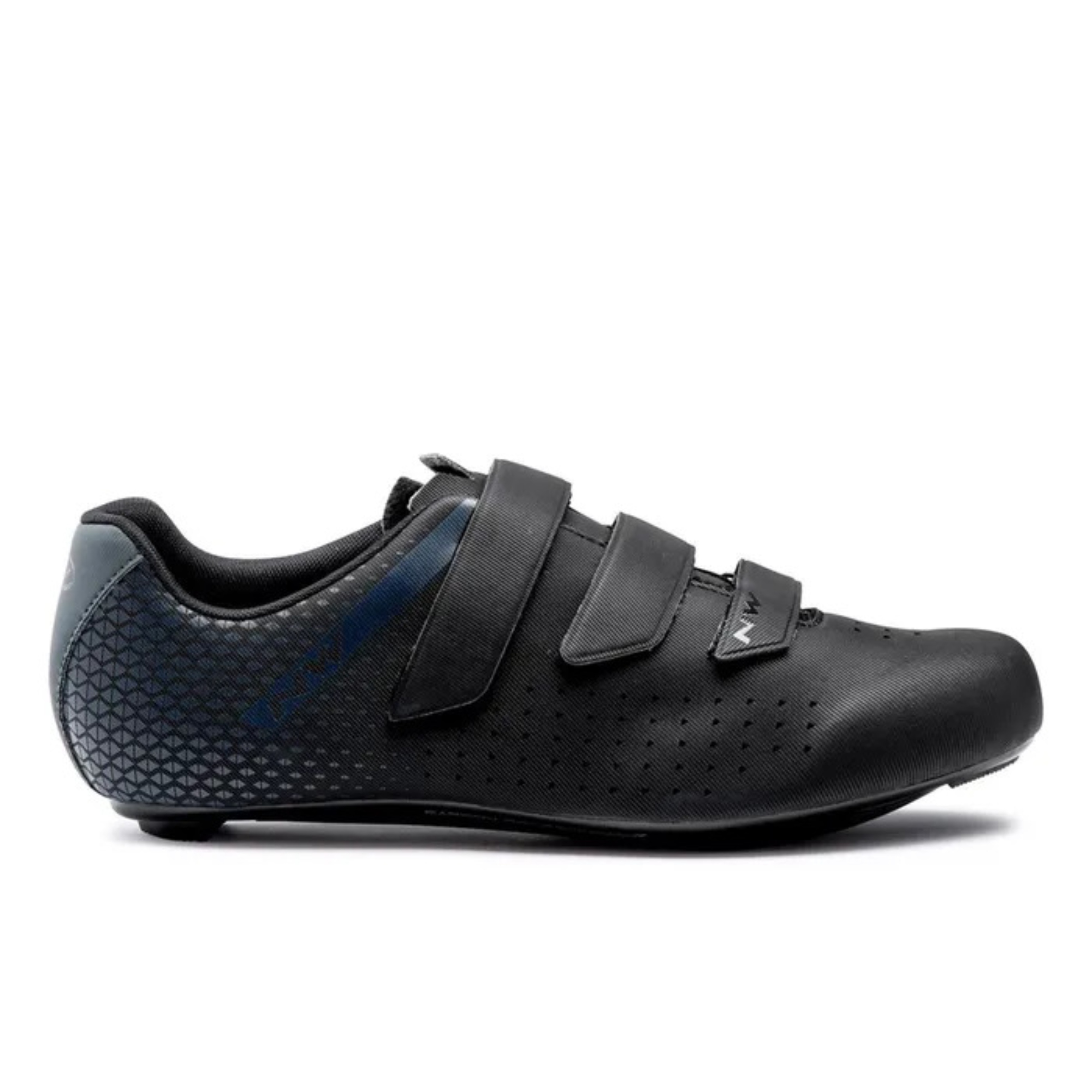
A stylish shoe that blends comfort with performance; the vented sole is plenty stiff while the upper is unobtrusive.
SPD shoes

A grippy sole that's great to walk in is matched to a upper that features a comfy single-sided tongue arrangement.
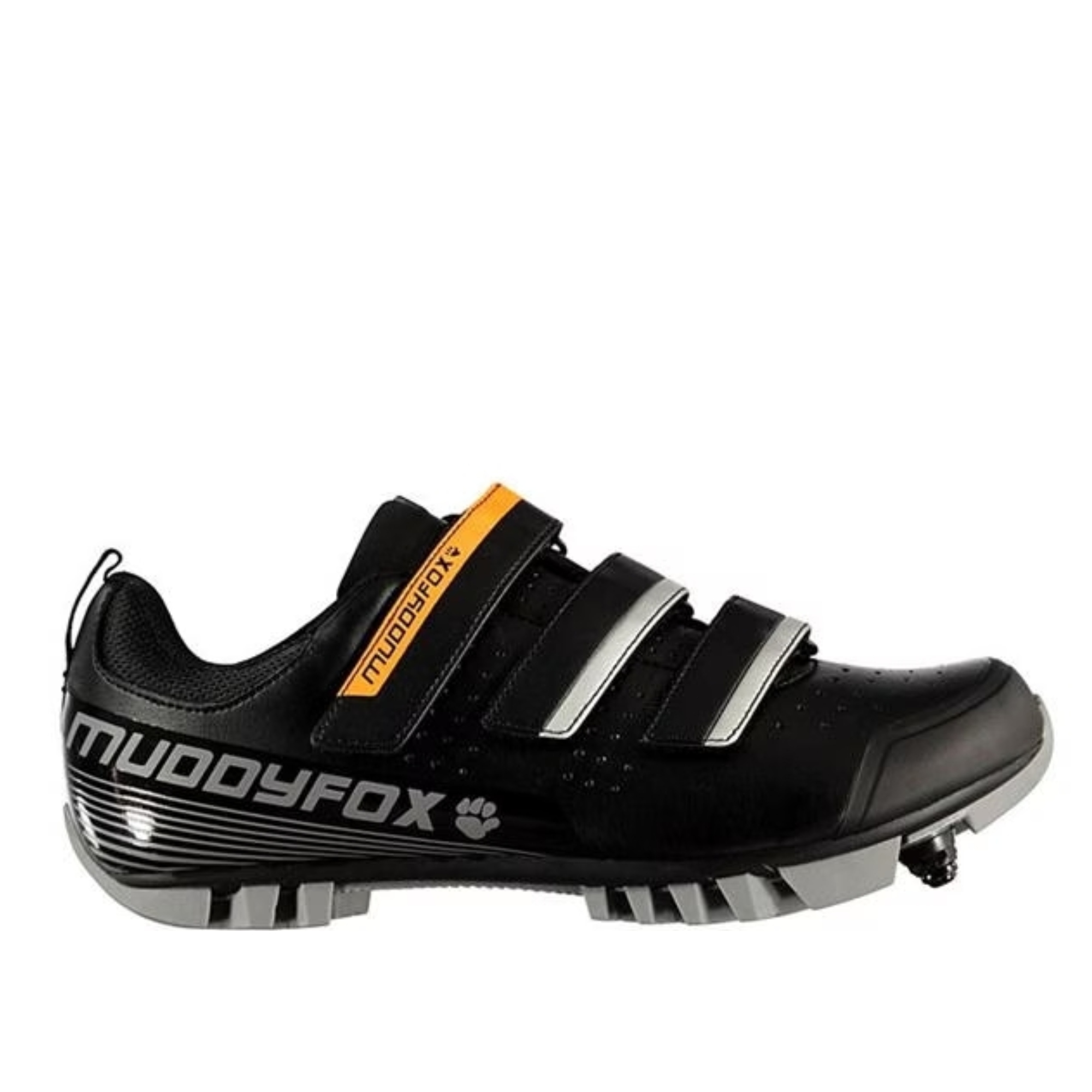
Affordable shoes suited to those new to 'clipping in', they're comfortable to wear but soles do lack grip.
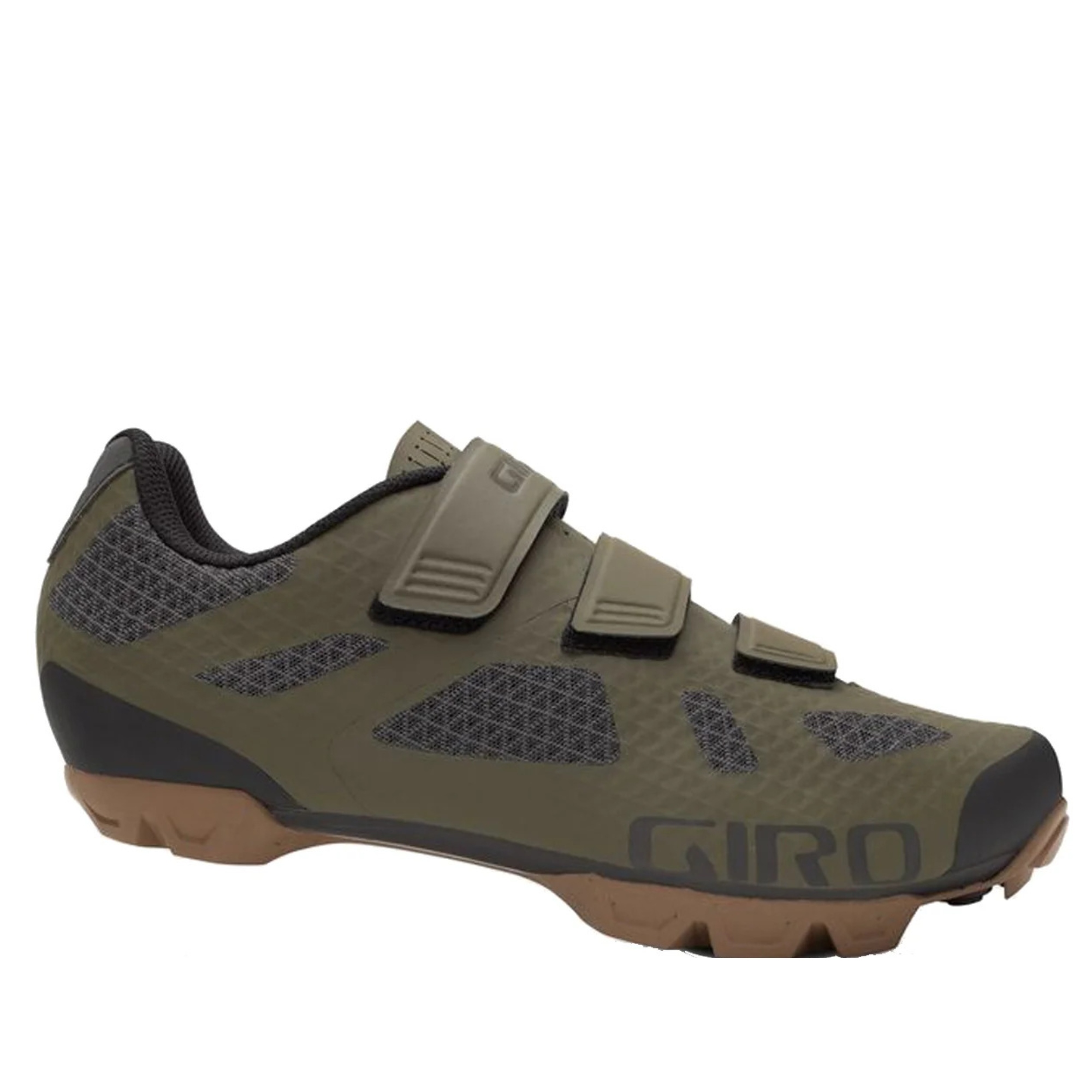
Lightweight, breathable and comfortable to wear, with a grippy sole that adds to their gravel appeal.
Best budget cycling shoes 2024: Our picks
Road shoes
Best road all-rounder
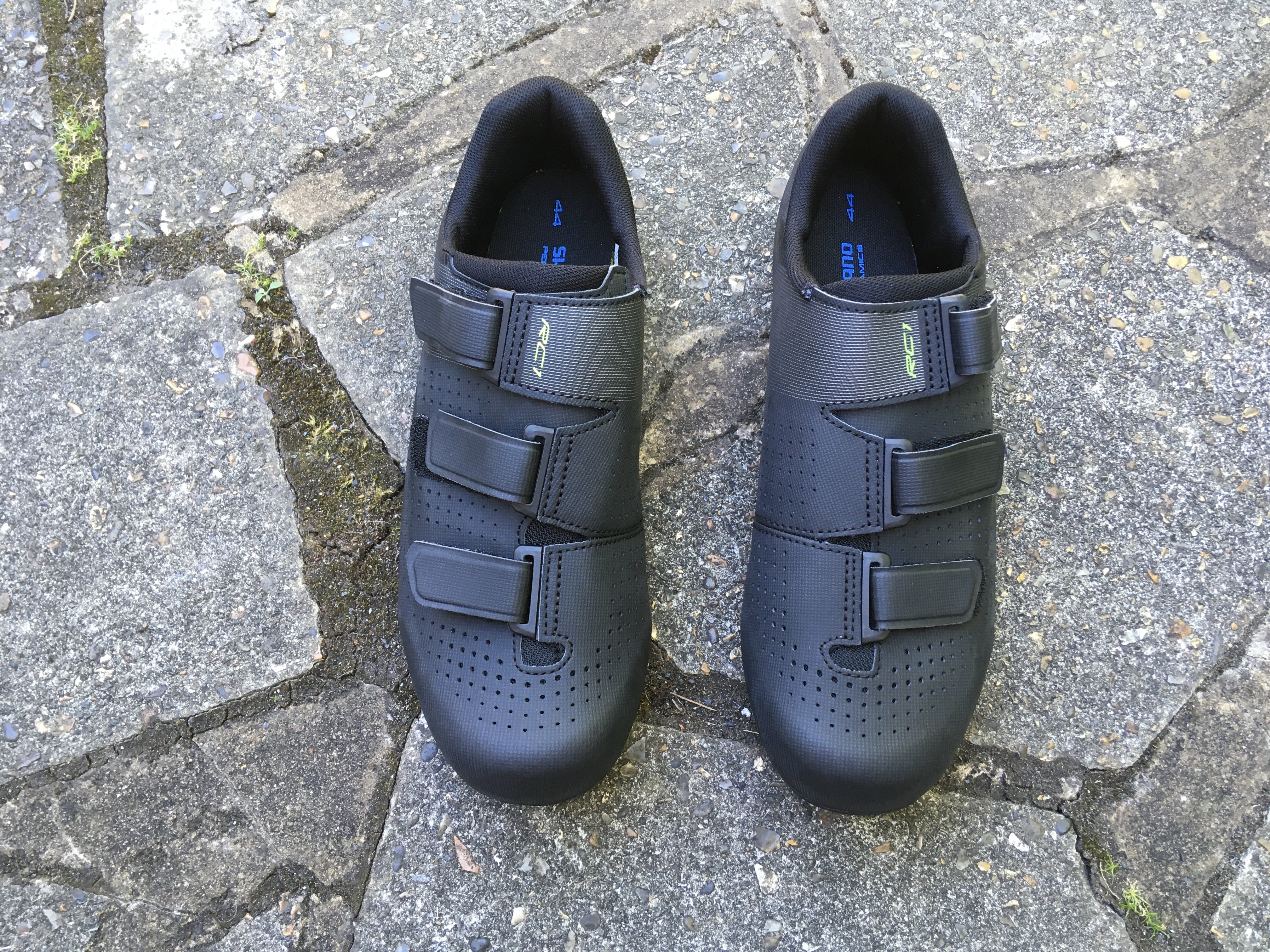
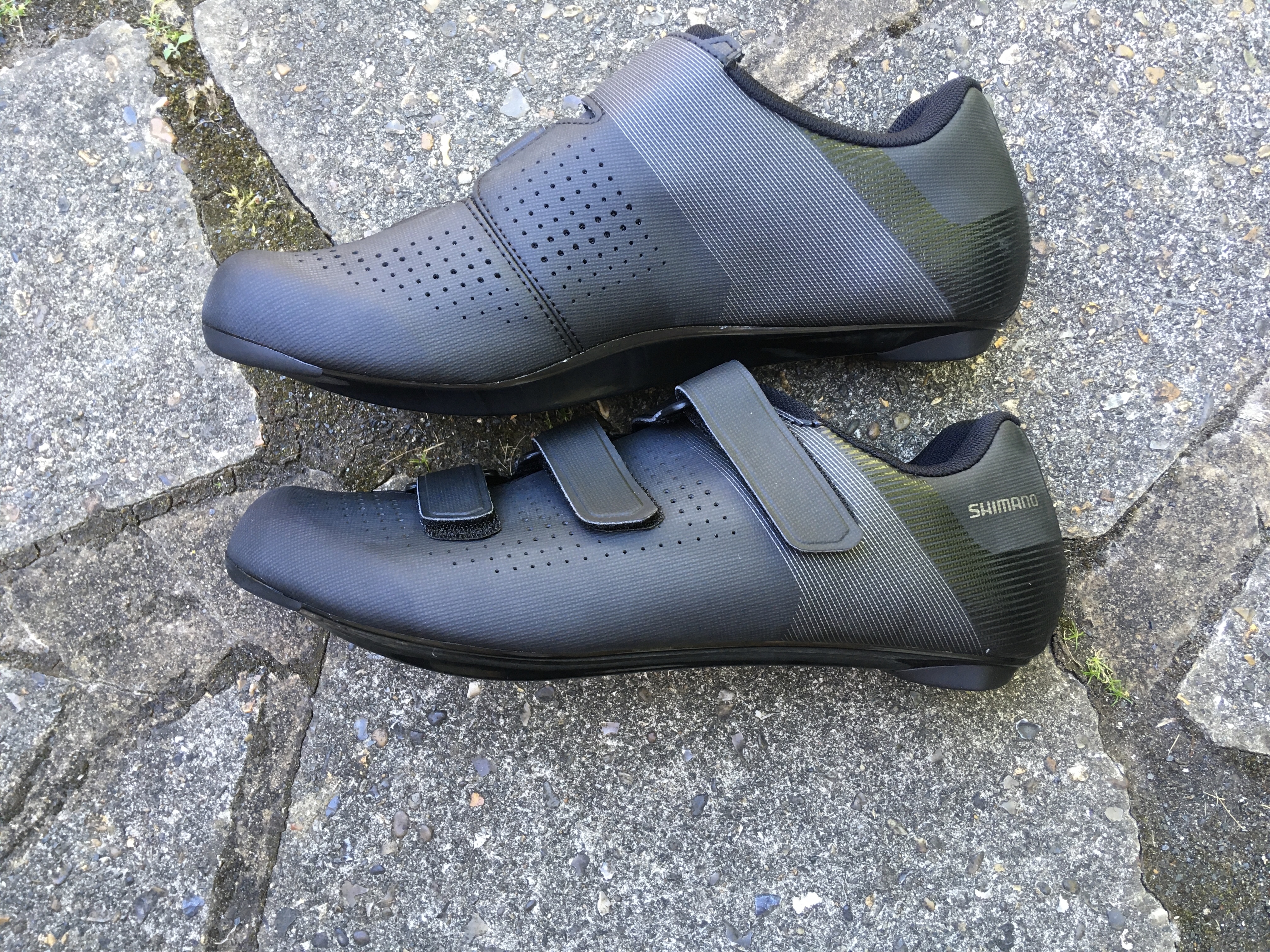

1. Shimano RC-1 (SH-RC100)
Our expert review:
Specifications
Reasons to buy
Reasons to avoid
The RC-1 is a well-designed shoe. We found the sole to be just the right level of stiffness for recreational rides. It’s made from a glass fiber-reinforced nylon with some vents to help keep your feet cool. Shimano says it rates as 6 / 12 on its stiffness scale. For us this translated to a shoe that was flexible enough to walk in when needed, while still feeling that the power you were putting in during pedaling wasn’t being wasted.
As for the upper, it uses a synthetic leather material that features plenty of perforations, again to help your feet from overheating. To secure the shoes, Shimano has opted for three velcro straps. While it might not look as elegant as a dial fastening we found that it allowed us to attain a comfortable yet secure fit, with the added bonus of the upper offset strap relieving tension on the top of the foot. We found this to be particularly helpful during long and hot rides.
As for the overall fit, we’d describe it as snug but not overly so. While our heel remained in place and felt secure throughout our riding, the toe box was still generous enough as to be comfortable even during those longer rides. We’d also suggest that you might need to size up from your regular shoe size.
The RC-1 is offered in three colors, black, navy and white, and in sizes 36-50 plus a ladies black with accents in sizes 36-44.
Cheapest road shoe on test
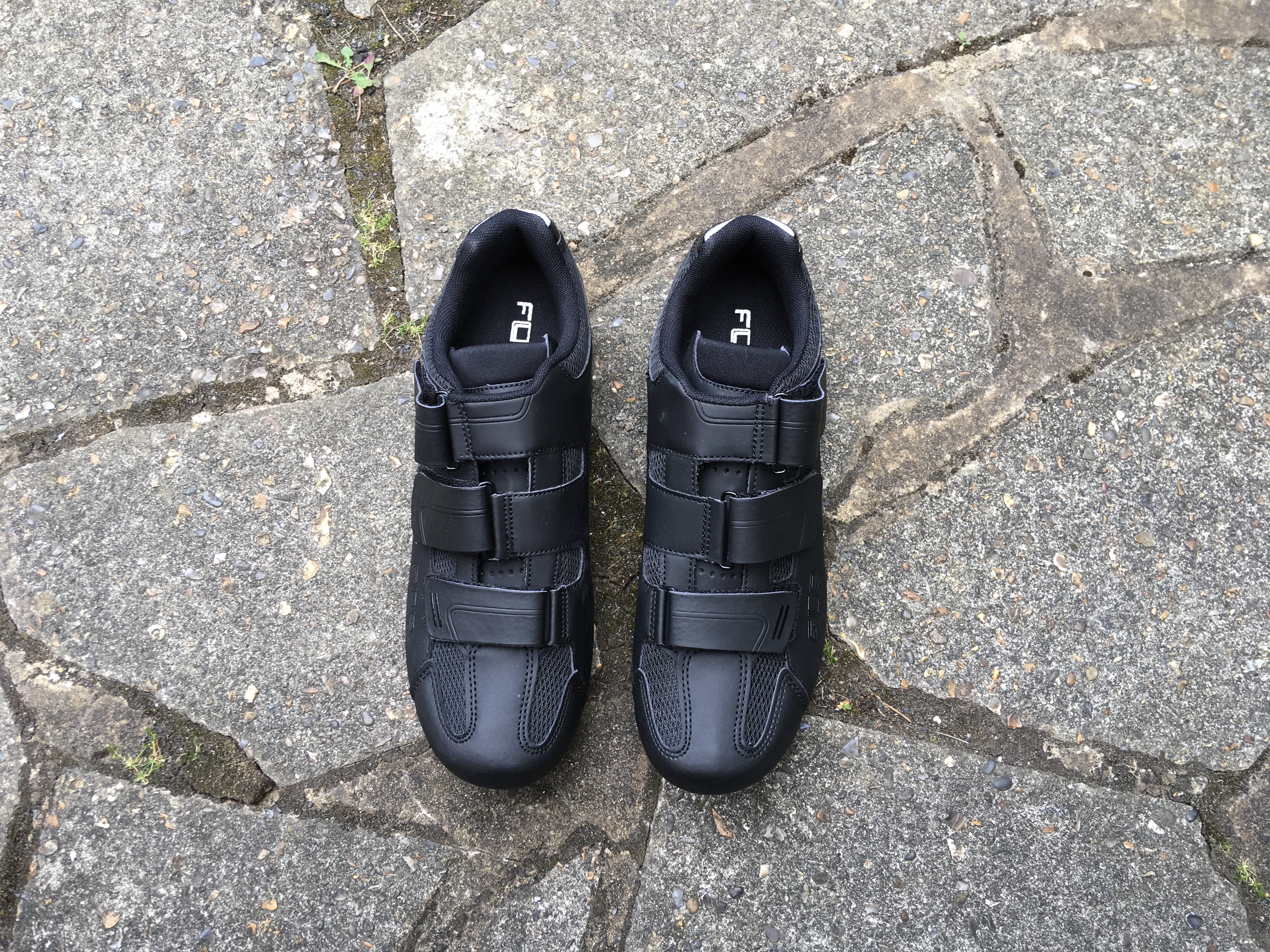
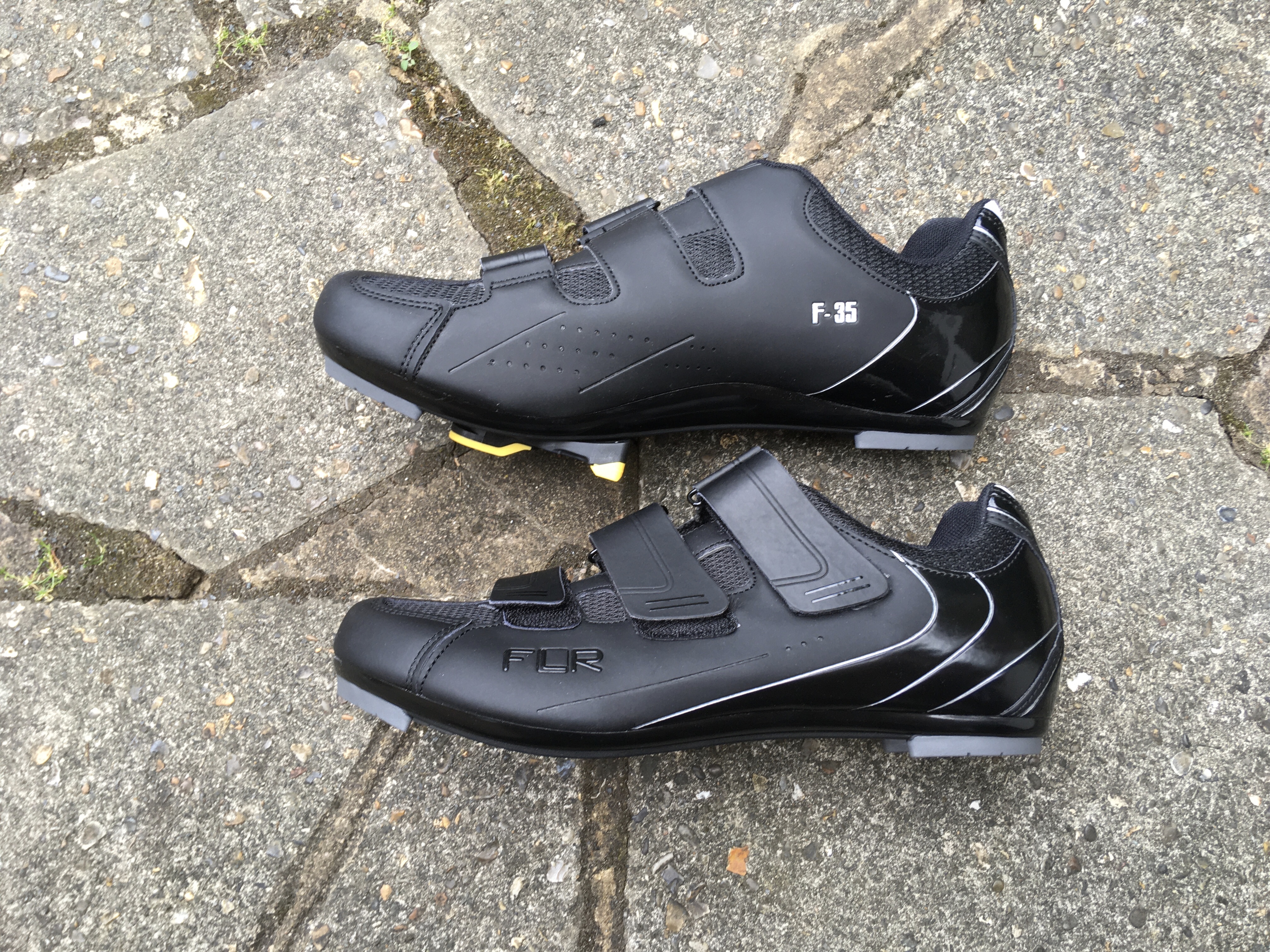
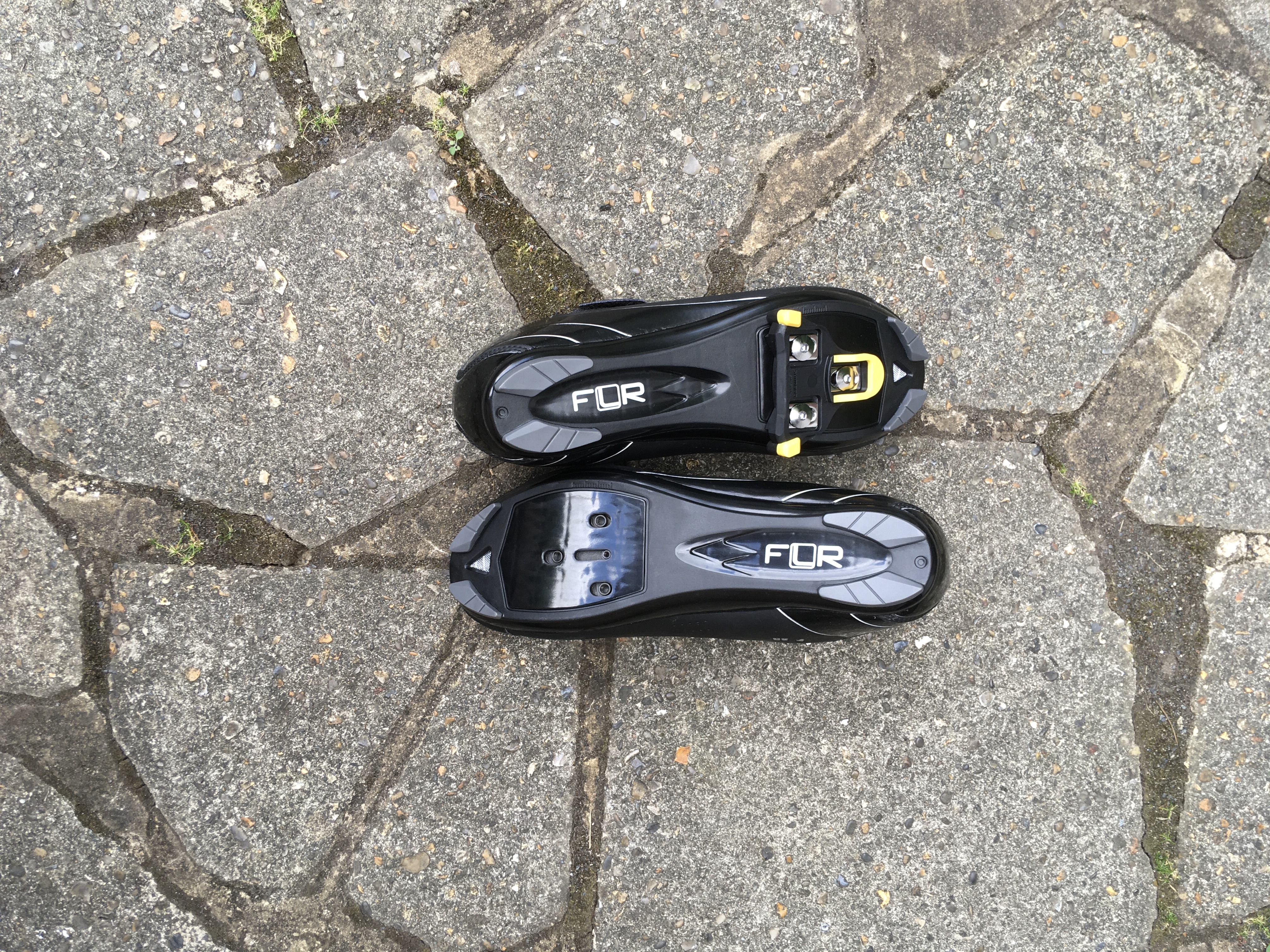
2. FLR F35-iii
Our expert review:
Specifications
Reasons to buy
Reasons to avoid
As the cheapest shoe we’ve featured here the F-35iii is a great match for those who are really looking for plenty of value for money. Despite the price tag the shoes feature an injected fiberglass sole that's comparable to other models featured here. We found that it transferred power efficiently and was pretty comfortable to walk in with its wide and stable heel pad.
The upper is synthetic and features mesh sections for improved breathability. Like the Shimano RC-1 it uses three velcro straps for fastening. We did notice that the top strap had a tendency to come out of its loop when putting the shoe on. However, once secured it stayed in place during our riding time.
We’d describe the fit as somewhat generous, both in the width of the toe box and around the heel. However we experienced no heel slip, making this a shoe that’s well-suited to wider feet.
There are six color variants on offer - Black with either white, yellow or pink detailing, White, Fluorescent Yellow and Fluorescent Pink, and sizes 36-49 are catered for. There’s also a reflective detail on the heel, which is a nice addition.
Best for comfort


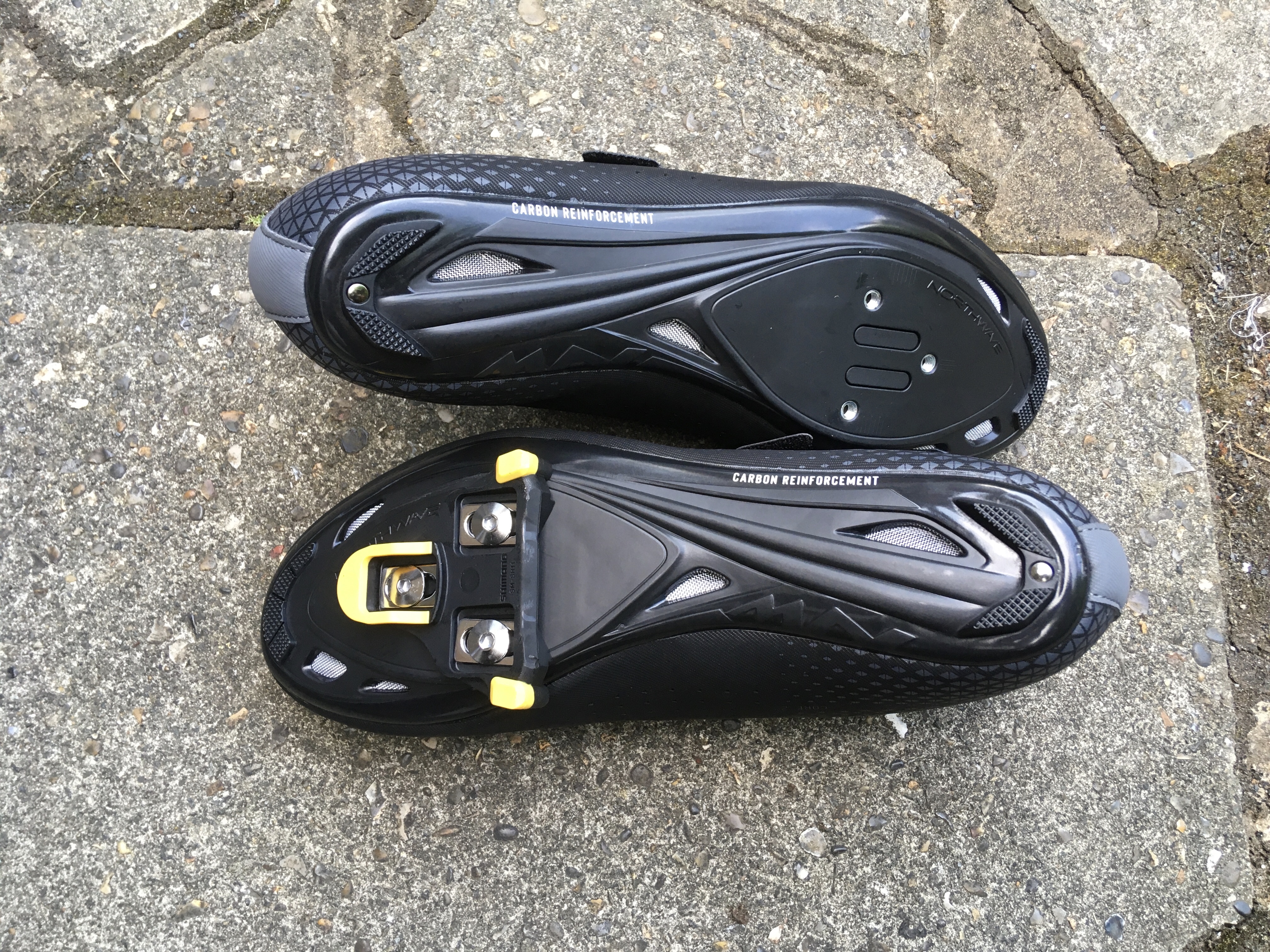
3. Northwave Core 2
Our expert review:
Specifications
Reasons to buy
Reasons to avoid
The Northwave Core 2 is certainly democratic when it comes to its sizing. Alongside the sizes 36-50 offered for men (including half sizes 39.5-45.5), there’s also a women’s version that runs 36-43 with the same half sizes and a junior version that starts at a size 32.
As for the build, it uses a carbon-reinforced sole with five vented sections and a stiffness rating of 8.0, which on its scale means it’s moderately stiff. The upper is made from a synthetic material and uses Northwave’s seamless unibody construction, which is designed to aid comfort and reduce any pressure points. In practice we found the design to be effective although it did require us to make sure the upper velcro strap was correctly positioned to avoid pressure building up on the top of the foot.
As for the fit we found it to be generous enough that we could wear a thicker sock on cold rides without the toe box becoming cramped.
Other plus points include the shoe’s ability to work across different weather conditions. In the rain we found them to be somewhat weatherproof, while still breathable during hotter rides. Add in the reflective detailing on the heels and you have shoes that can be worn across the seasons.
The men's shoe is available in three colors; black with either a subtle grey heel section, a red or yellow heeled version. The lady's shoes have a black front half which fades to a white heel section with a flash of pink for good measure. The junior's fade from black to a bright yellow rear outer half of the shoe.
Best performance
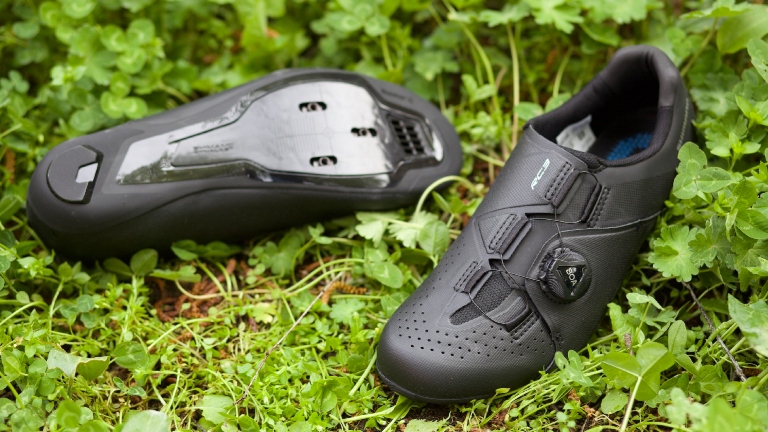
Shimano RC3
4. Shimano RC3
Our expert review:
Specifications
Reasons to buy
Reasons to avoid
Another offering from Shimano. This time it’s the Japanese brand’s RC3. It features a design that’s not too dissimilar from its elite S-Phyre range, with an overlapping, tongue-less design and a Boa L6 dial as well as the same midsole construction that has the seams placed below the sole rather than at the edges. Visually it gives you the same sleek look but without the exotic materials and resulting price tag.
In terms of performance, the shoe impressed us. The Boa dial held our feet in place with the sole aiding power transfer without feeling overly stiff. The upper proved comfortable too.
While no half sizes are available, the sizing does go all the way up to size 50, which will make it a good option for those with larger feet. Wide sizes are also available in a slightly more limited range.
SPD shoes
Best all-rounder
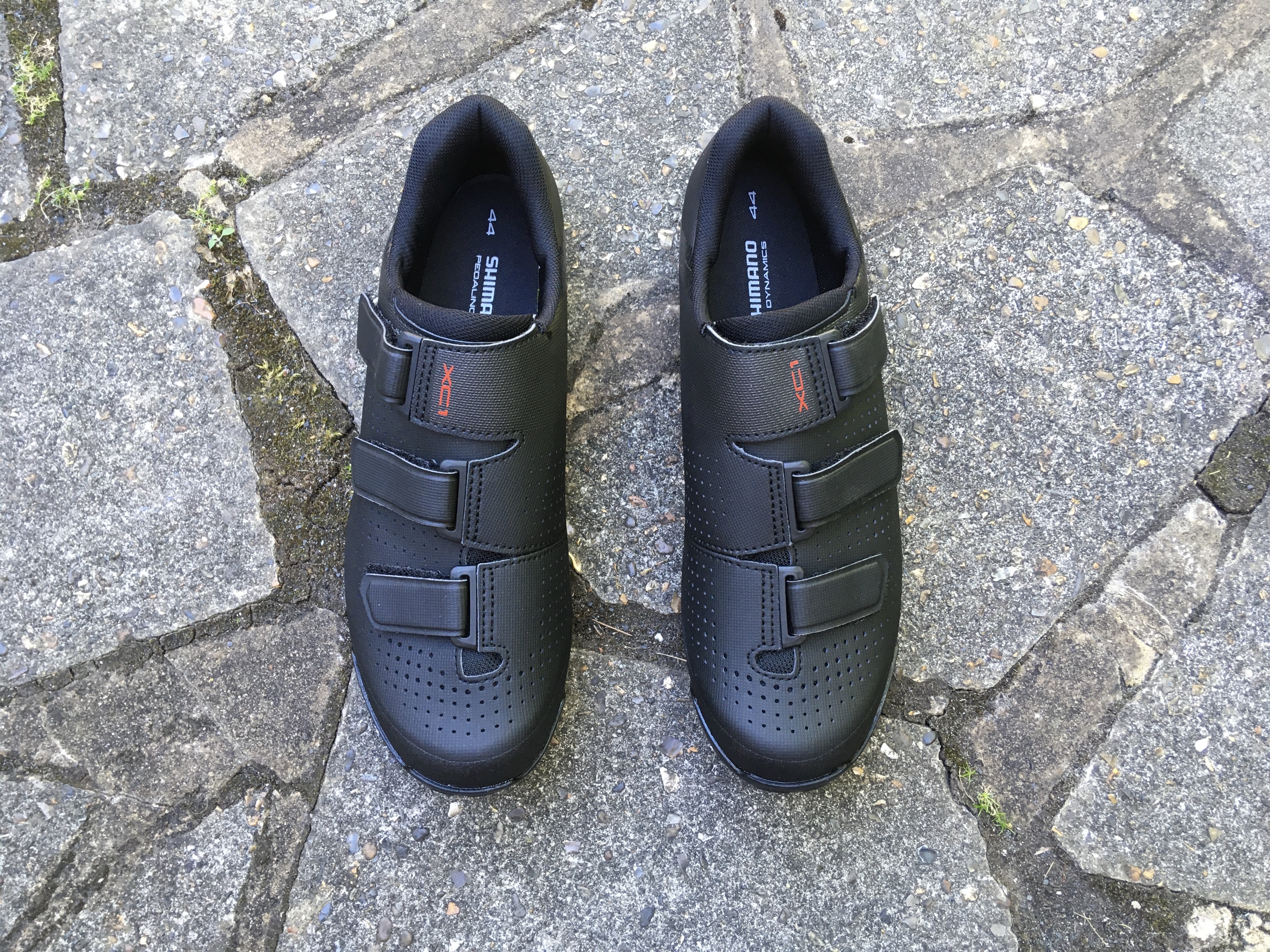
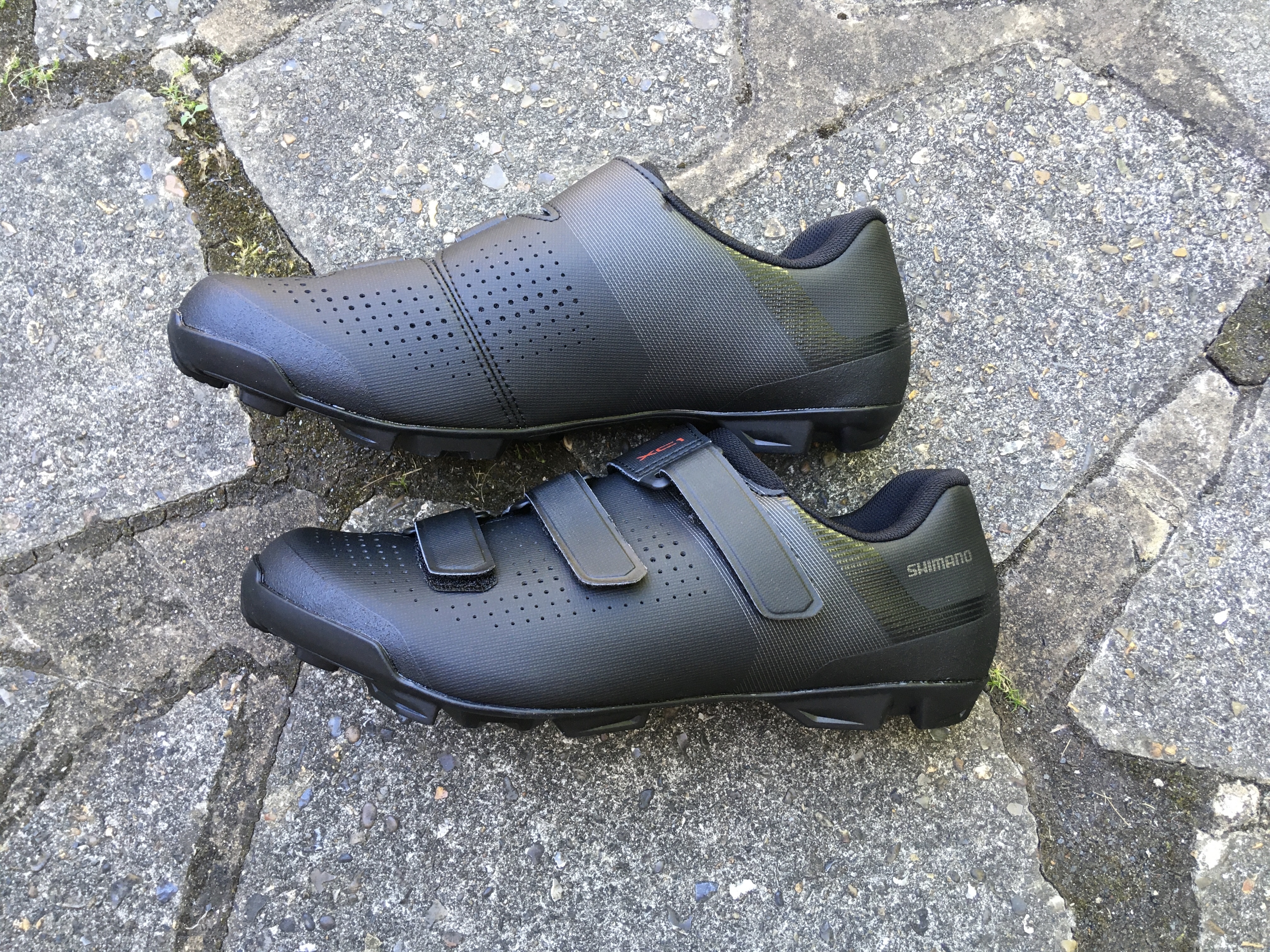
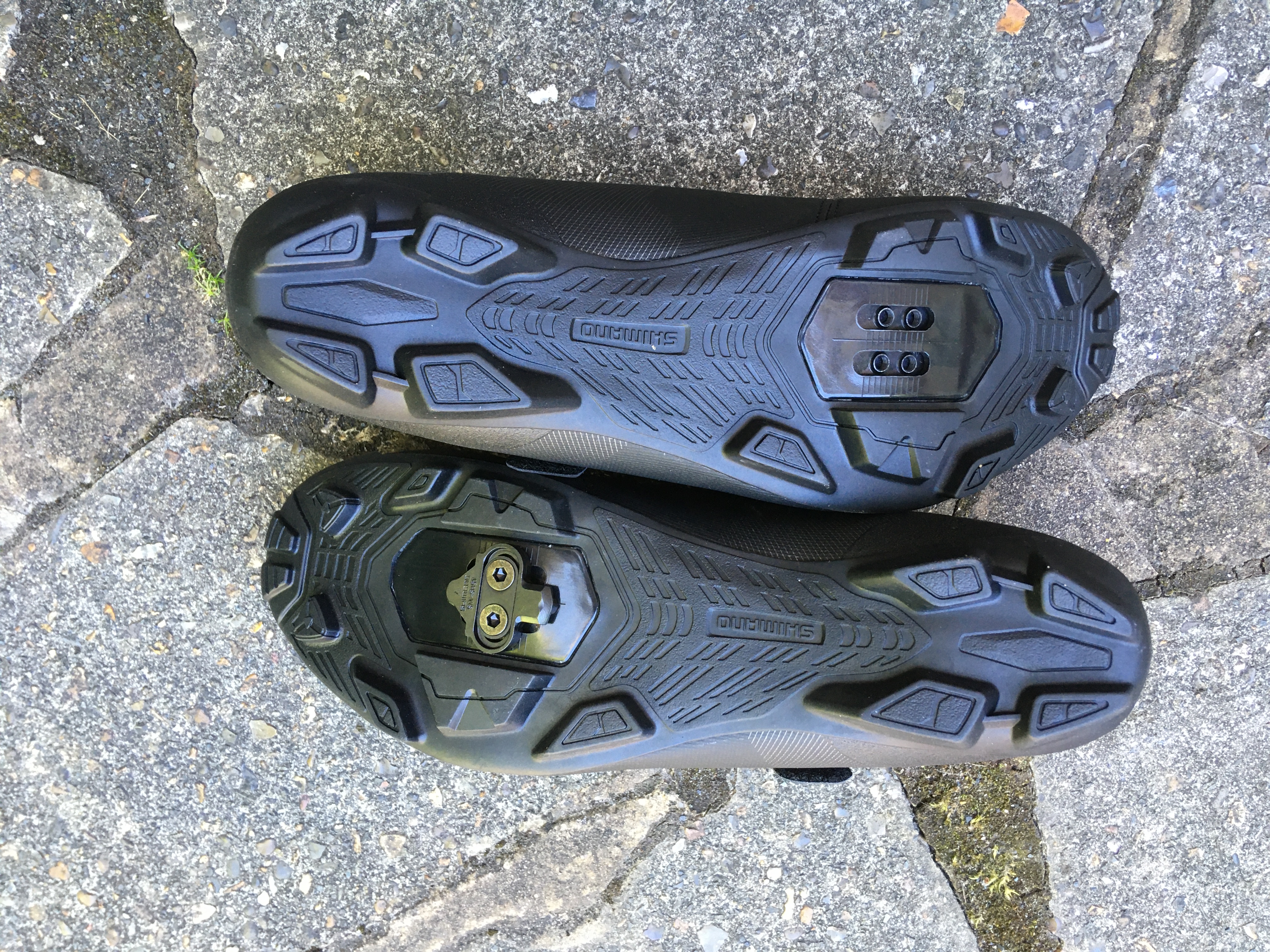
1. Shimano XC-1 (SH-XC100)
Our expert review:
Specifications
Reasons to buy
Reasons to avoid
The XC-1 is the off-road version of the RC-1 featured above. It shares a few similarities including the same synthetic leather upper and three velcro straps but does differ in a few areas that make it a great fit for gravel riding and commuting.
Firstly the sole isn’t quite as stiff. It’s rated 5 / 12 on Shimano’s stiffness scale and translates to a shoe that’s really comfortable to walk in. This comfort is aided by a great heel cup and a grippy rubber outsole that’s well-suited to trails and sidewalks.
When it comes to fit we found the toe box to be a little tighter than the RC-1. We managed to get around this by loosening the lower velcro strap. The tongue design, where the upper slides over the fixed tongue, coupled with the offset upper velcro strap, made for a really comfortable shoe, with no pressure points across the top of the foot. As with the RC-1 we needed to size up, in our case from our usual 43 to a 44.
Cheapest on test

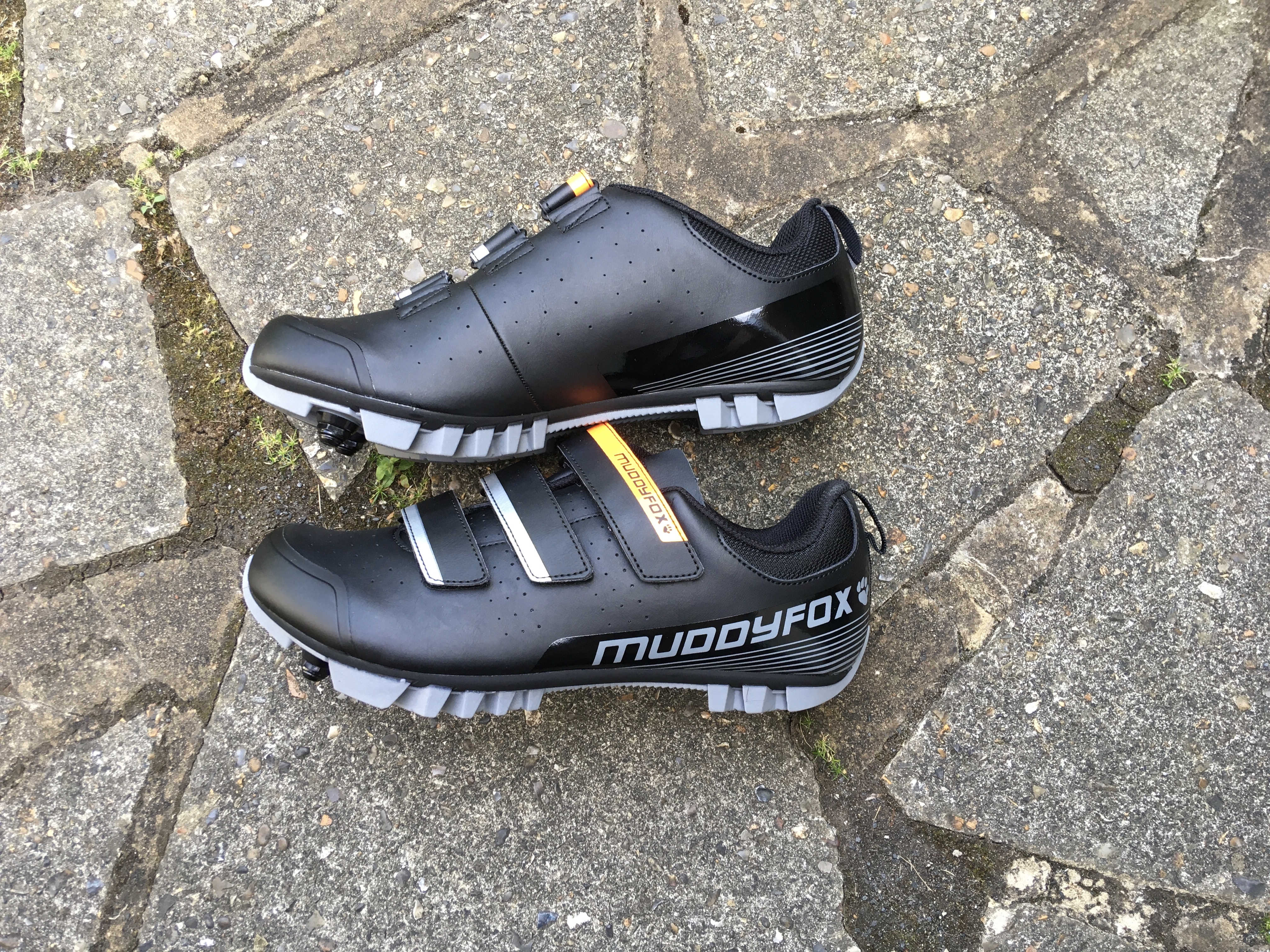
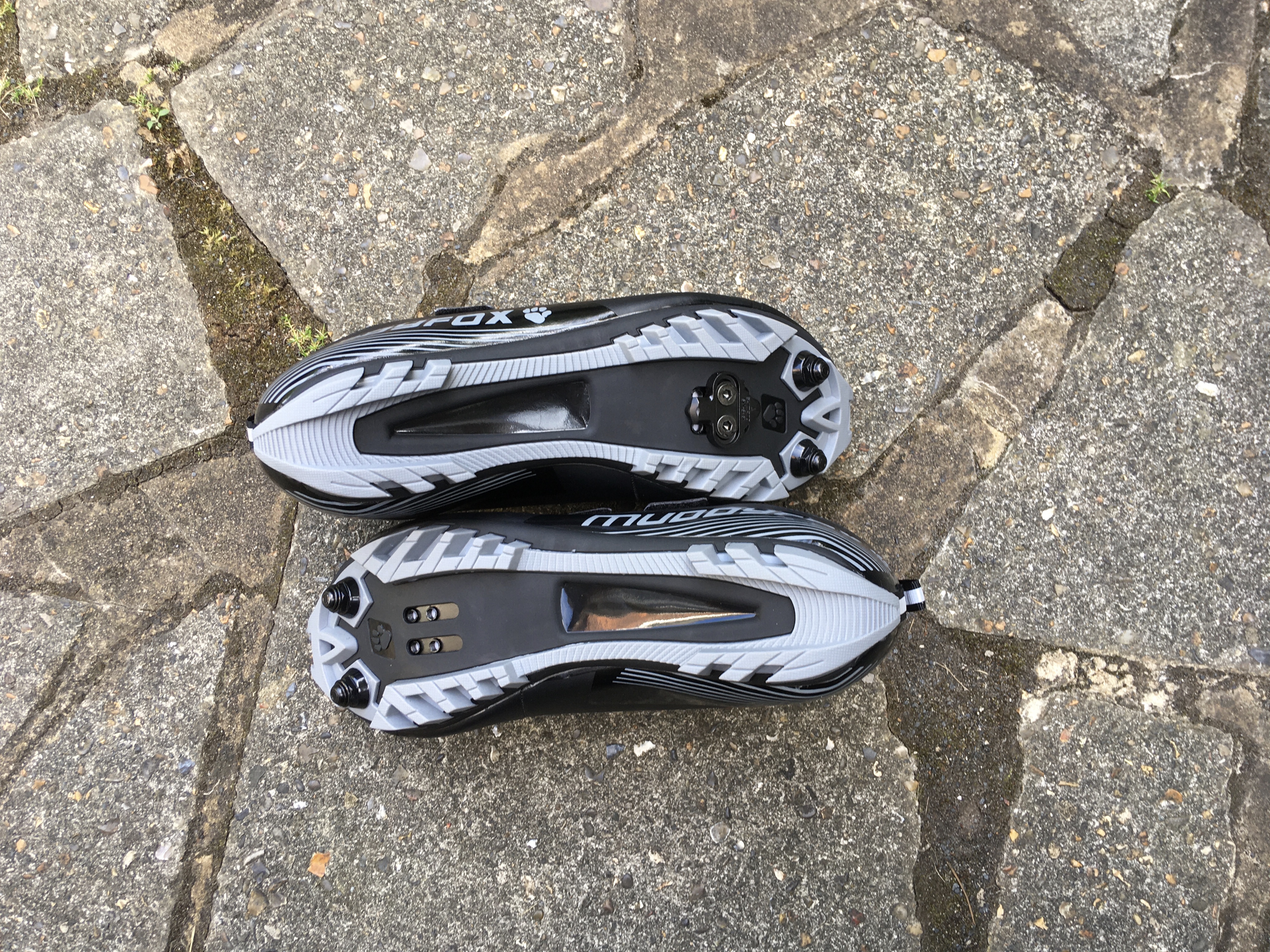

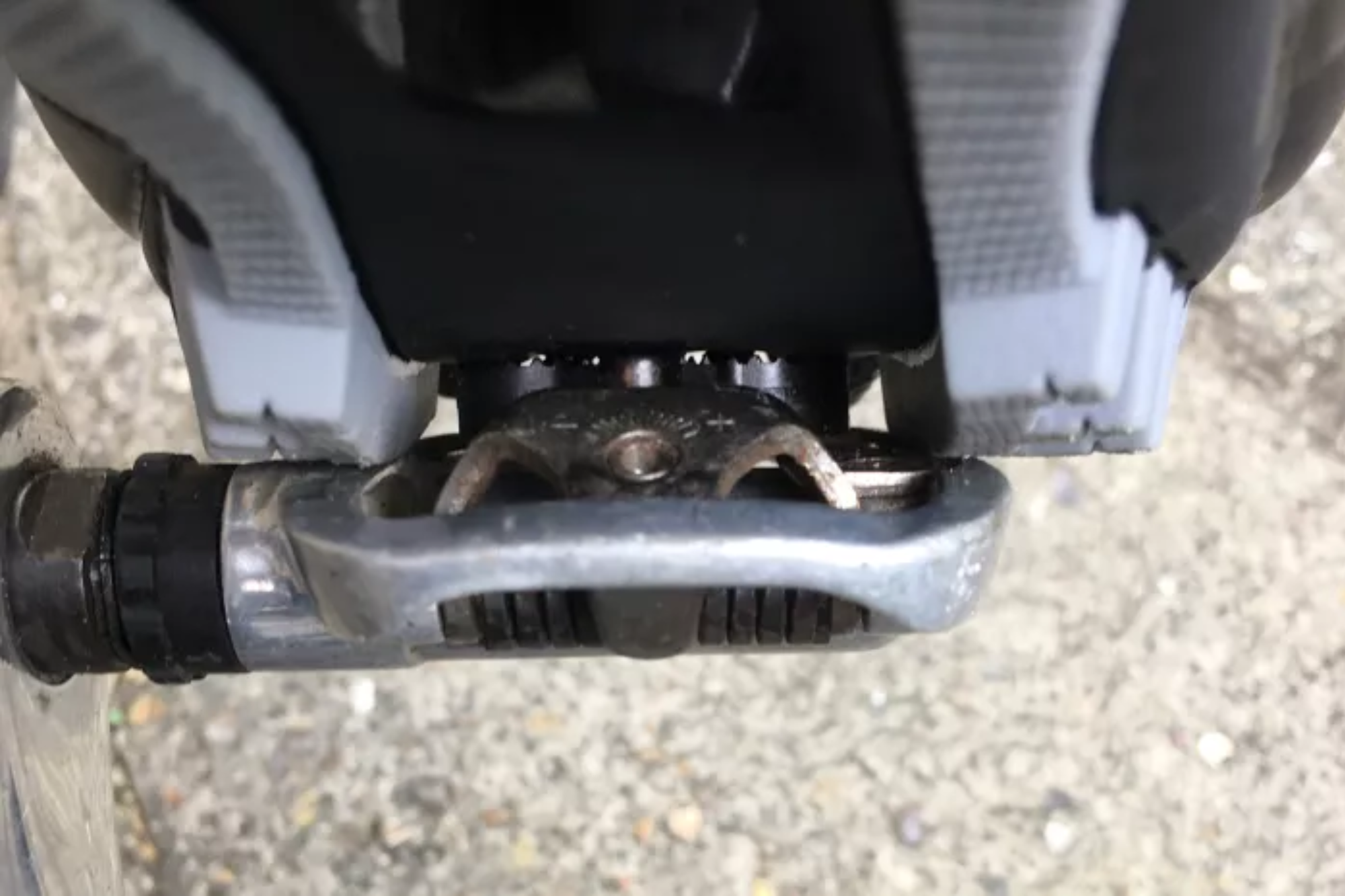
2. Muddyfox MTB100
Our expert review:
Specifications
Reasons to buy
Reasons to avoid
The cheapest SPD shoe featured in this guide, the MTB100, as the name says, is designed as a mountain bike shoe. However, if you’re after gravel shoes designed for burly trails then it’s likely a good fit. However the sole features an aggressive tread and removable toes studs that we found made it a little tricky to walk in - we’d suggest removing the toe studs unless you're riding muddy tracks and trails.
While the shoe is comfortable, we did find the fit was a little odd. The rounded toe box coupled with the lack of arch support meant that our big toes touched the end. You could size up of course, but we’d recommended trying the shoes on before you buy just in case you experience a similar issue.
Best for gravel
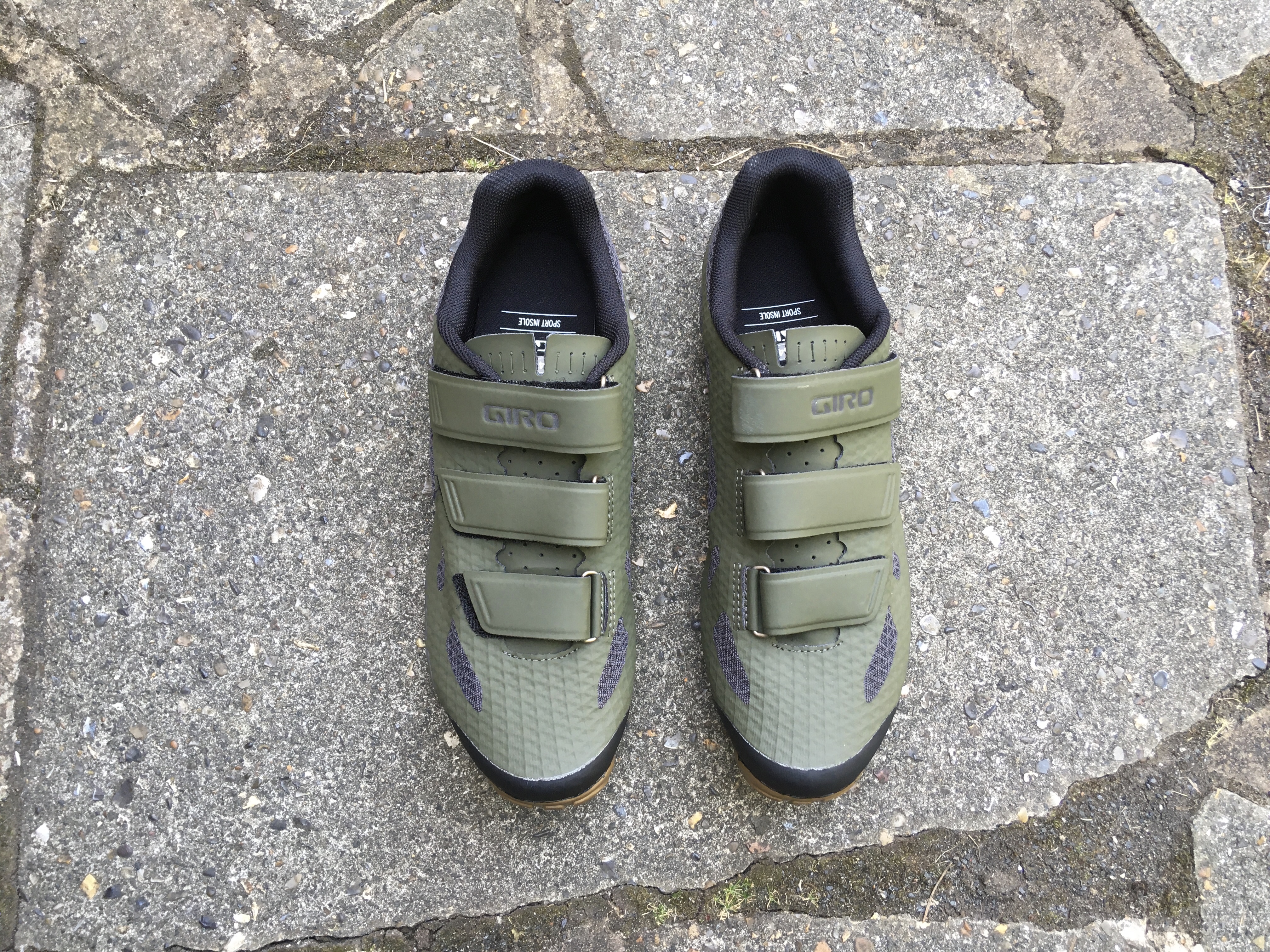
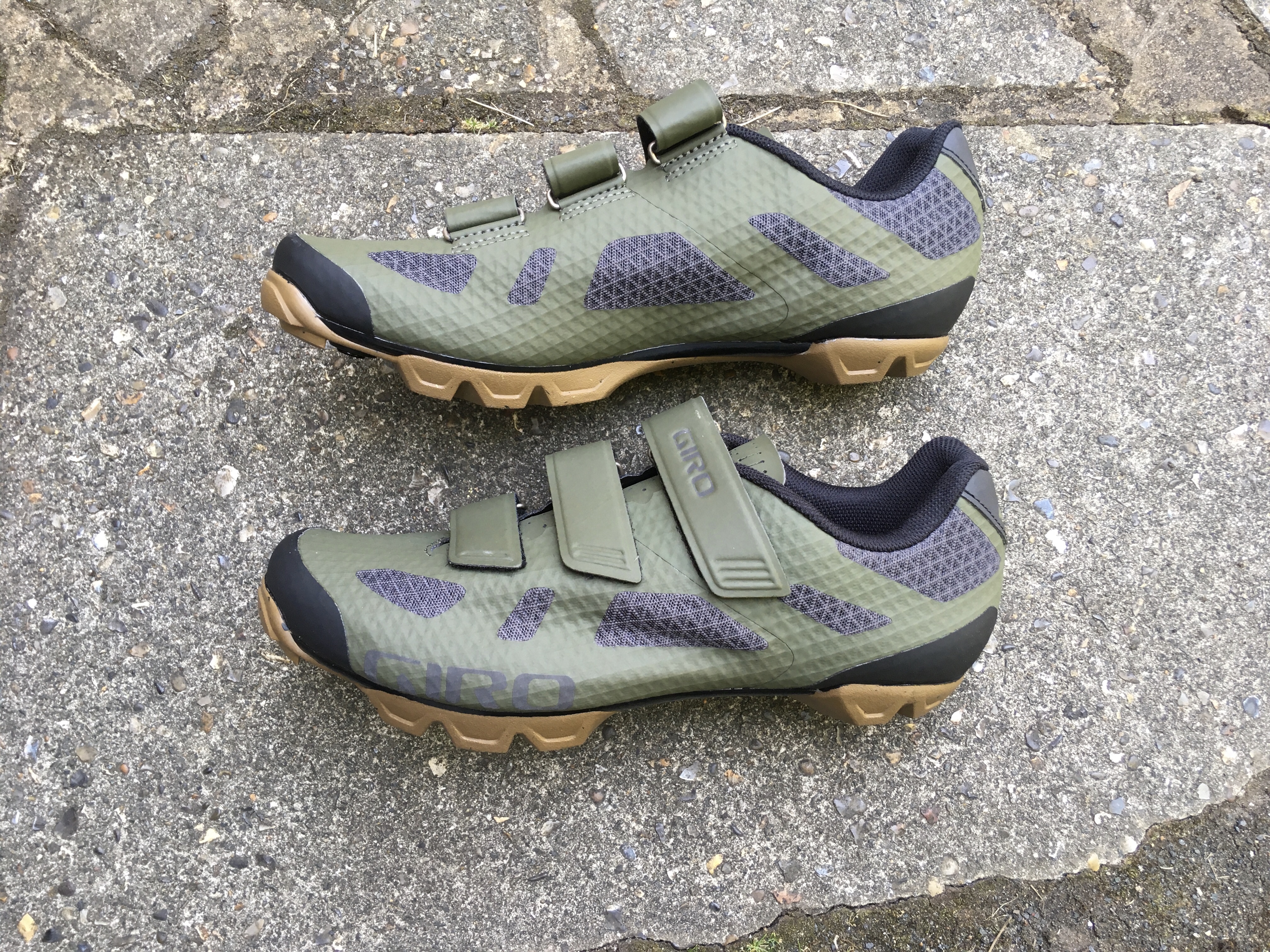
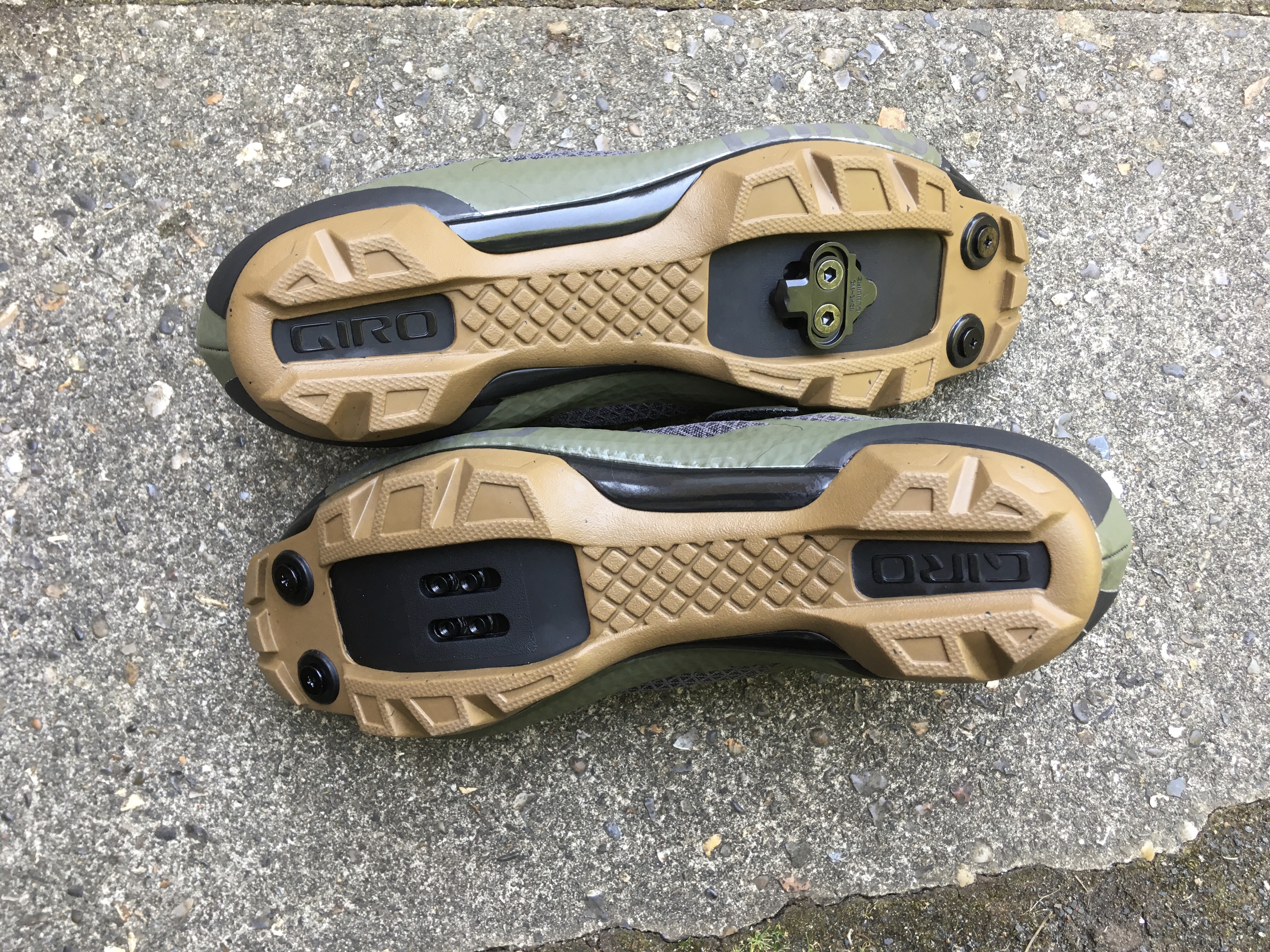
3. Giro Ranger
Our expert review:
Specifications
Reasons to buy
Reasons to avoid
While the Ranger is the most expensive shoe here we feel it still delivers plenty of value for money. Aesthetically we loved the olive green with the gum sole and the synthetic upper is both supple and breathable, thanks to the mesh panels. We rode in temperatures close to the 30 degrees celsius and our feet remained pretty cool.
The three velcro straps allowed us to adjust the fit nicely, while the choice of three sizes of arch support is a bonus; we found the standard fit to be just fine.
A good gravel shoe needs to be comfortable to walk in as well as delivering enough grip. And the Ranger succeeds at both. We found them to be the most comfortable of all the SPD shoes in this guide when it came to walking, while the rubber outsole provided us with plenty of grip. There’s also the option of adding two toe studs per shoe.
Best for leisure riding
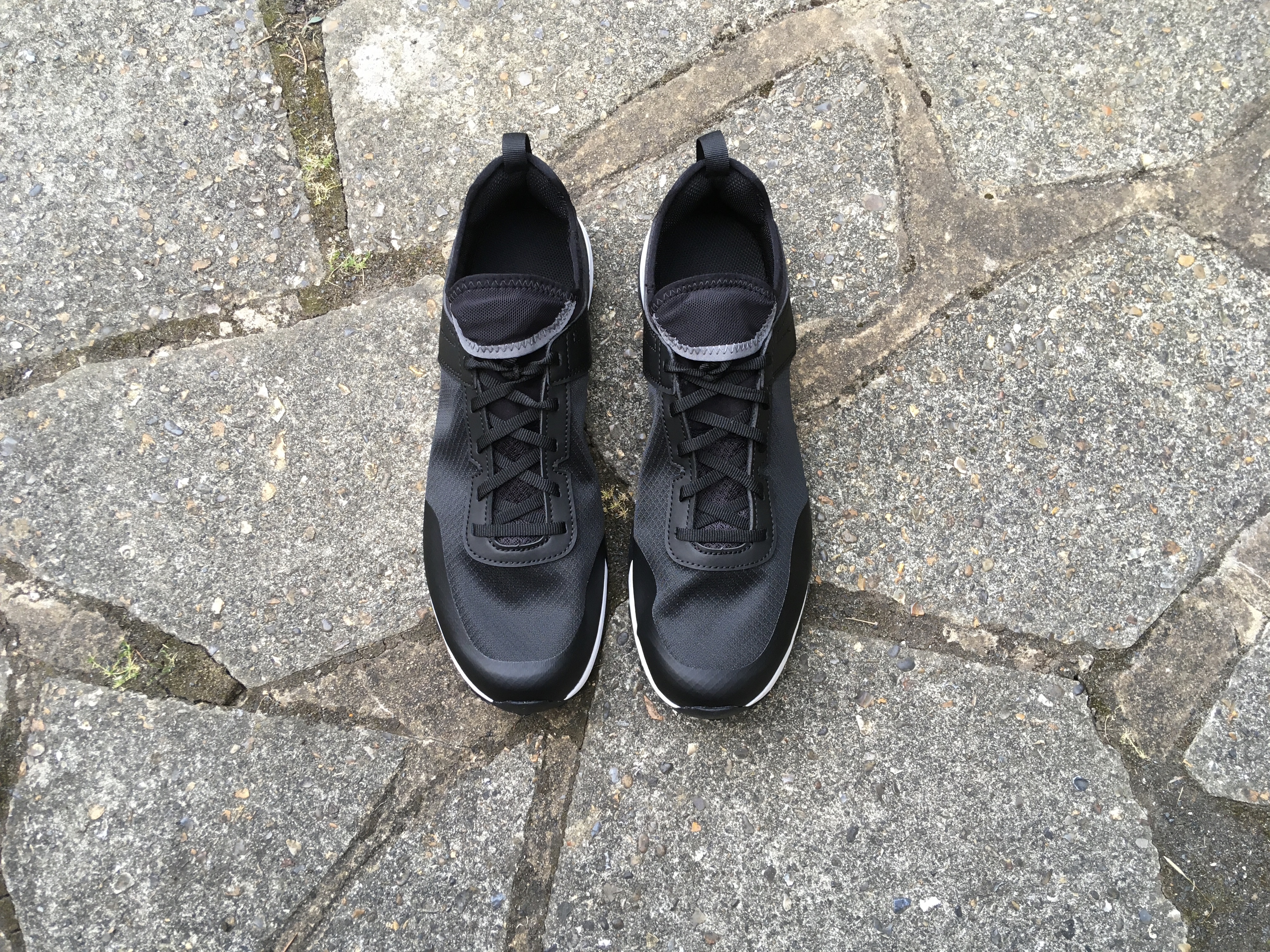
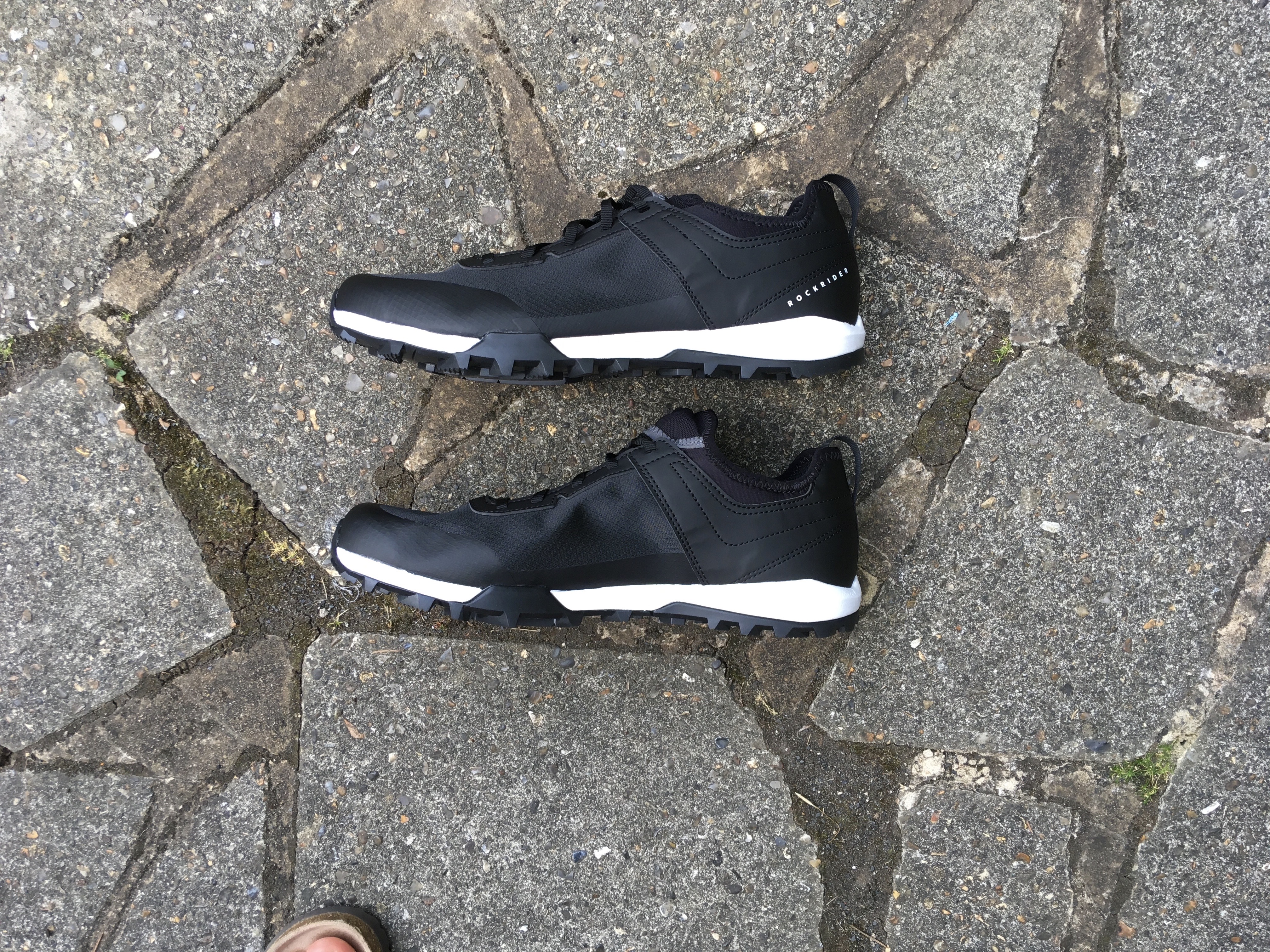
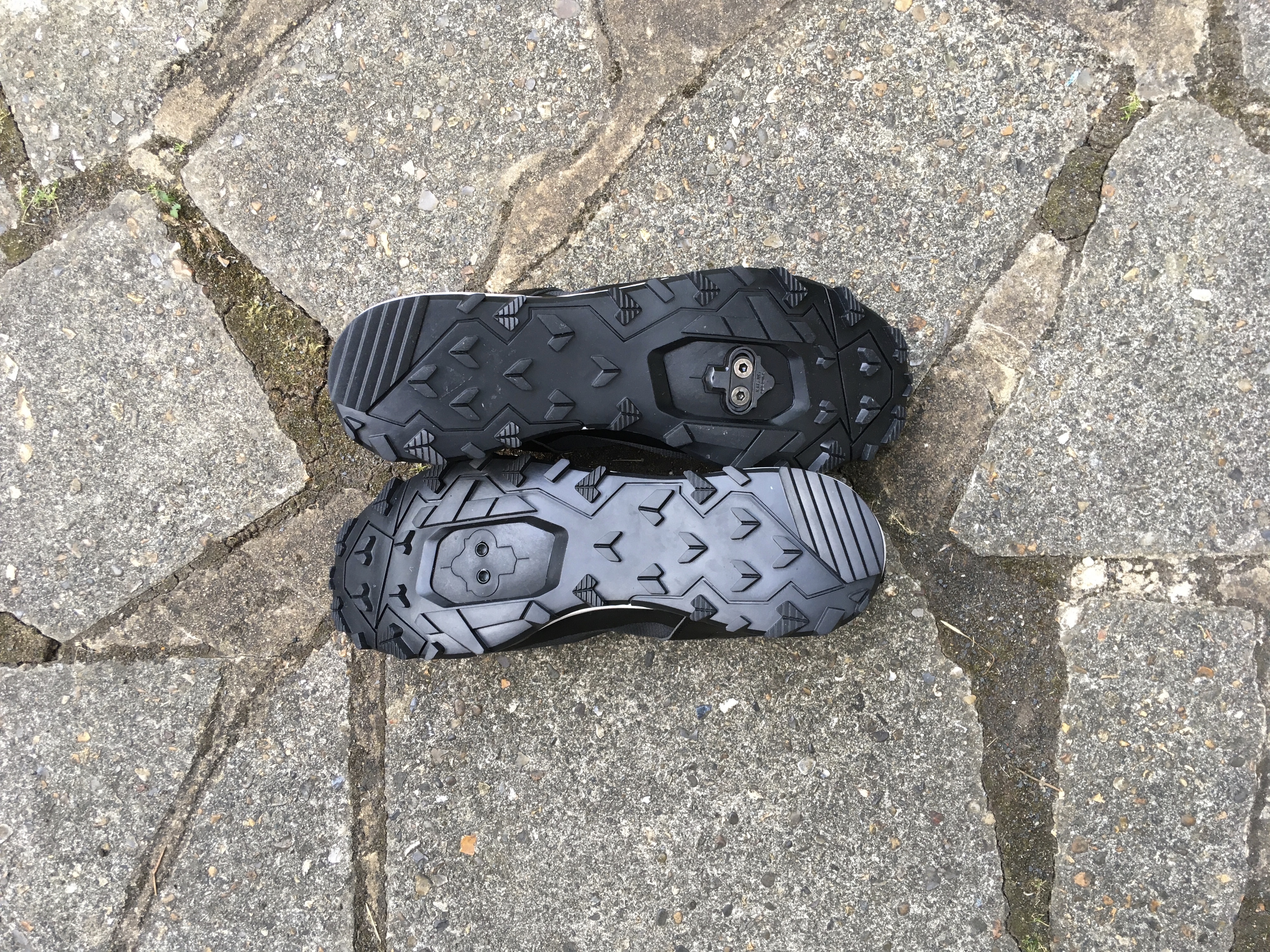
4. Rockrider EXPL100
Our expert review:
Specifications
Reasons to buy
Reasons to avoid
The Rockrider EXPL100 shoe represents great value for money particularly for a novice or occasional rider. The shoes have the appearance of a sneaker rather than a dedicated cycling shoe.. The sole has a trail running shoe tread pattern with widely spaced blocks that should shed mud fairly easily. It is a nicely grippy tread and whilst it isn't a particularly stiff sole it is comfortable to walk in.
Decathlon says that this shoe is good for a couple of hours riding and we'd agree with that. After that, the laces start to be felt on the top of the foot a little, and lower down they don't add much support if one is out of the saddle and pulling up on the pedals. We did, however, like the lace tidy-away at the top of the sewn-in tongue. It stopped the loose ends from getting anywhere near the chain and front rings.
Overall it’s a shoe that is well-suited to leisurely commutes or recreational rides with the family where you’re likely to spend time both on and off the bike.
Advice
Why buy cycling specific shoes?
There are three main reasons why you might consider riding with a cycling-specific shoe. Firstly, it will allow the use of cleats and clipless pedals. Secondly, once clipped in, more of your leg power is transferred through the pedal to the wheel. Finally, once set up correctly, your foot will be in the optimal position for pedaling.
Of course, you can achieve similar things with old-school toe clips (this is why SPD type pedals are called 'clipless'), or you may prefer flat pedals with pins for mountain biking as this can allow more dynamic movement of the bike.
What are the differences between 2-bolt and 3-bolt cleats?
Assuming that you're looking for a shoe to clip in with, we looked at some shoes that use the 2-bolt SPD type system and some shoes that use the 3-bolt SPD-SL road system. Broadly speaking, to decide whether to choose the 2-bolt or 3-bolt route here are some pros and cons:
3-bolt SPD-SL gives a larger clipped-in area so that more power is transferred and a more secure fixing is created. However, they are more awkward to walk in. Shoes tend to be stiffer soled too. Recommended for road use primarily.
The 2-bolt SPD uses a smaller cleat which has a smaller interface with the pedal yet still transfers power efficiently. It can be walked in more easily as the cleat is recessed within an outsole with grippy tread. For this reason, it is recommended for everything else and you can ride road happily with it too. As a consequence of this versatility, you tend to find a wider variety of shoe types too. The only other thing to be aware of is that often different pedal brands will only work with their own pedal and cleat combinations - pairing Shimano pedals and Time cleats won't work, for example. They all will work with either the 2-bolt or 3-bolt standard as appropriate though.
There are two shoes on test (dhb Dorica and Northwave Core 2) that can accept either 2 or 3-bolt cleats. I have assumed that they are a 3-bolt type primarily as to try to walk in them with a 2-bolt cleat would be very difficult. They would work as a group cycling class or turbo trainer shoe where you can take them off immediately. They would give you the flexibility to use in those contexts then move to a road setup when outdoors.
HOW SHOULD I CHOOSE CYCLING SHOES?
Beyond the obvious shoe size, there's a lot to think about when choosing cycling shoes. Even sizing isn't straightforward, as you want a cycling shoe to hold your foot steady to pedal efficiently, so you might need a shoe that's a half size down from your normal.
Carbon soles will be stiffer and increase pedalling efficiency, which is great unless you're expecting to walk in them when a little more give will prove useful. Likewise, they don't have any sole grip.
You also need to make sure that you have the correct cleat holes in the sole for your intended pedal system; either two or three (or sometimes four for Speedplay cleats).
Think too about the closure system. BOA dials are efficient but expensive and single dials may not distribute pressure as evenly as dual dial systems. Ratchets and Velcro are cheaper and can be as efficient. Laces look smart and save weight, but you can't adjust them while riding.
A highly ventilated pair of cycling shoes or shoes with woven uppers will keep your feet cooler in hot conditions, but won't be so good if it's cold and damp.
Finally, there's the price: how much are you prepared to spend? There's no substitute for trying before you buy.
WHAT ARE THE IMPORTANT FEATURES OF WELL-FITTED CYCLING SHOES?
Cycling is a forefoot sport. Whilst the foot itself doesn’t generate any power, all of the watts produced elsewhere pass through your feet. So not only do poorly fitting shoes create pain, but they can also limit performance.
A former British Cycling physiotherapist and bike fitter at the eponymous Phil Burt Innovation, Phil Burt told us: “If you’re in a wrongly fitted shoe it would manifest as rubbing around the little toe, pain underneath the first and second toe where a lot of people get numbness or pins and needles.”
Touching on the performance element, he added: “The foot and ankle don’t generate any power. All the power comes from your quad and your glute. But you can lose a hell of a lot through badly fitting shoes – for example, if your foot is moving around or over pronating, you can waste a lot of energy.”
The key variables when it comes to cycling shoes are the fastening system, the sole, the cleat style, and of course the fit, although that does depend on whether you've teamed with a pair of good cycling socks.
SHOULD I TRY CYCLING SHOES ON BEFORE I BUY THEM?
The best way to check the fit of a shoe is to try it on in your local bike shop before purchasing (hopefully you'll make the purchase in the shop too!). It is better to do this in the afternoon or evening as your feet can expand slightly during the day.
Shoe sizing is pretty consistent across brands, particularly when compared to other pieces of cycling clothing – but just because your old and worn-out size 46 shoes were comfortable, it doesn't necessarily mean you can jump straight into a different brand in the same size.
Arch heights, shoe widths, and different fastening systems can all mean that you may find yourself going a size up or down when buying new cycling shoes. Flashier shoes usually come in half sizes, so you can get a good match for your feet. Lower-priced shoes, however, tend to be sold in whole sizes only - they are usually more roomy to start with as well. If your feet are between sizes, that can make choosing the right size tricky. If you're not sure, we'd suggest sizing down.
Methodology and technical info
For the 3-bolt shoes, I used the Shimano PD-R550 SPD-SL pedal (c. £65) with an SH-11 cleat (6 degrees of float) as this is not only a good pedal system but it is arguably an entry-level component that matches the shoes tested.
For the 2-bolt shoes I used the PD-M520 SPD double-sided pedal (c. £45) which has 4 deg float, as again it's a great entry-level pedal that won't break the bank. I used the SH-51 single direction release cleat but there is an SH-56 multi-release cleat available for nervous new riders.
There are many other brands to consider (Time, Look, Ritchey, Speedplay etc), however your primary choice is still 2 or 3-bolt type...
Regarding float; This is the amount of movement that a pedal and cleat have while connected. This will really help your knees in particular. Unless you know otherwise (for yourself) start with a mid setting as recommended above.
Also if you're new to clipless pedals find our guide on how to set the cleat position on road bike cycling shoes here. You'll also want to check out our how to on cycling with 'clipless' pedals. Before riding we recommend turning the tension screw right back to '-' (minus). It's often a 2.5 or 3mm Allen key bolt. Then ride up and down a quiet area and practice clipping in and out. Once you're more confident you can up the tension a little at a time. Ideally you should clip out with moderate force by turning your heel outwards but not straining your knee. If your foot gets released (over rough ground for example) without your 'command' then raise the tension a little. They're probably too loose.
It is a common fear of riders new to the system that they will stop, not be able to unclip and fall over in an ungainly fashion. Loosening the tension and practicing should help. It'll soon become second nature.
Finally, the same sock was used for all shoes and any mentions regarding fit, etc are relative to each other. I take a 43 in 'normal' shoes and am generally a size 44 with cycling shoes. All the shoes tested were a 44 except the dhb Dorica which was a 43.
Conclusion
A diverse set of shoes that span road, cross country, commuting, touring and leisure and each has its niche. It's easier to keep the groups separated for the sake of simplicity, so firstly the 3-bolt cleat road shoes. They were all pretty closely grouped price-wise as well as ride-wise, with small details that separated them. They all looked the part, with possibly an extra style point awarded to the dhb Dorica, they were all stiff enough to effectively transfer power to the pedals and they were all comfortable, with an extra point given to the NW's for the shape of their shoe. If your budget will stretch to the Shimano RS3, then it is a superb shoe with many features trickled down from shoes higher up the range but it is a bit more expensive than the others.
They were all fine to walk in; the Shimano being particularly good. For variety of colors and price point, the FLR had the field pipped. Personally, I liked the fit of the Northwave best but this is highly subjective.
The 2-bolt cleated group of shoes had a much wider selection of purposes and as such were not so directly comparable. Certainly, the low price point of the Decathlon and Muddyfox's should allow most people to try SPD pedals in a family or gentle leisure setting, or to try trickier off-roading. The Shimano's felt most at home in a commuting or touring setting but are quite capable of on or off-road use . Which leads us to the Giro Ranger which had the chops to race cross country, or ride off-road generally, but equally they could live happily as an on-road shoe. The extra cost of the XC-1 and Ranger showed itself in the quality of their construction.
How we test
Cycling Weekly's team of testers has extensive experience in assessing and writing unbiased reviews of a wide range of cycling products. Since it all involves riding, shoes are central to this and we've tested literally hundreds of different pairs.
We have testers with large feet, small feet, narrow feet and wide feet, so you can be sure that we've taken account of the differences in fit and foot comfort for a wide range of riders and understand what makes for a good pair of cycling shoes.
All our reviews use the same 1 to 5 star rating system:
5 - Superb, best in its class and we couldn’t fault it
4 - Solid product, could be improved
3 - Fine, but a few niggles let this down
2 - Acceptable, needs improvement
1 - Extremely poor, barely worked
The latest race content, interviews, features, reviews and expert buying guides, direct to your inbox!
Over 40 years cycling in a variety of disciplines including road riding, commuting, a self-supported Land's End to John o' Groats trip, XC mountain biking and several Polaris Challenge two-day events. Adventure, escape and fun are the motivations for my riding. I also love bike and kit design and have fillet brazed a couple of framesets using Reynolds 853 steel tubing for myself. A very satisfying experience to ride your own bespoke bike!
Height: 180cm
Weight: 66kg